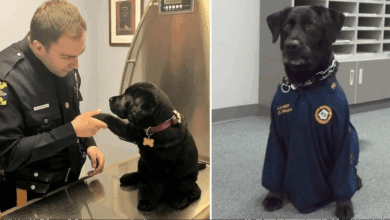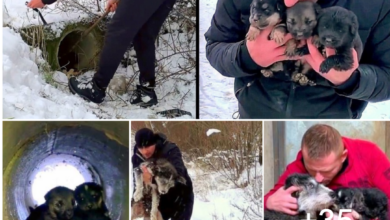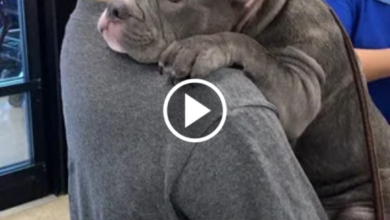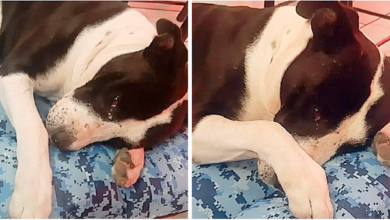Signs That Your Dog May Be Sick

As a dog owner, you know that your furry friend is an important part of your family. And just like any member of your family, you want to make sure they stay happy and healthy. One way to do this is by paying attention to any signs that your dog sick. Dogs can’t communicate with us using words, so it’s up to us as their caretakers to look for signs that something might be wrong.
By doing so, you can catch potential health issues early and get your dog the care they need before things become more serious. In this article, we’ll discuss some common signs of illness in dogs, so you know what to look out for and when it’s time to seek veterinary attention.
Changes in Eating Habits
Hey, if your pup suddenly starts turning their nose up at their food or begging for more than usual, it could be a sign that they’re experiencing changes in their eating habits and might need some extra attention from you.
One of the most common signs of illness in dogs is weight loss, which can be caused by a decrease in appetite or a change in metabolism. If your dog has lost weight without any obvious explanation, it’s important to take them to the vet as soon as possible.
Another sign that your dog may be sick is if they become a picky eater. Dogs are known for their hearty appetites, so if your furry friend isn’t interested in their food anymore, it could be an indication that something is wrong.
Some dogs may also become more thirsty than usual when they’re not feeling well. Excessive thirst can be a symptom of many different illnesses and should always be taken seriously.
If you notice any changes in your dog’s eating habits or thirst levels, it’s important to keep an eye on them and make note of any other symptoms they may be exhibiting. These changes can often indicate underlying health problems that require medical attention.
In the next section about ‘changes in behavior’, we’ll discuss other signs to look out for when determining whether or not your dog is sick.
Changes in Behavior
It’s funny how your furry best friend, who usually greets you with a wagging tail and slobbery kisses, suddenly becomes aloof and distant when feeling under the weather. Behavioral changes are one of the most obvious signs that your dog may be sick.
Mood swings can manifest in various ways such as sudden aggression, excessive whining or barking, being overly clingy or hiding away. If your dog is suddenly acting out of character, it’s important to schedule an appointment with your veterinarian right away. These behavioral changes could indicate a number of underlying health issues such as pain, anxiety, or even neurological problems.
Your vet will perform a thorough examination and determine the cause of these changes before developing a treatment plan. In addition to seeking professional help from your vet, there are some things you can do at home to help alleviate any discomfort your pet may be experiencing due to their illness.
Providing them with extra attention and comfort can go a long way in helping them feel more secure during this difficult time. When it comes to taking care of our pets, we always want what’s best for them. Paying attention to their behavioral changes is just one way we can ensure they stay happy and healthy for years to come.
Next up on our list of signs that your dog may be sick are gastrointestinal symptoms – let’s take a closer look at what to watch out for.
Gastrointestinal Symptoms
When our furry friends are feeling under the weather, their tummy troubles can be a clear indication that something’s not right. Gastrointestinal symptoms such as diarrhea and vomiting can signal various illnesses in dogs.
Diarrhea is characterized by loose stools or frequent bowel movements, while vomiting is the forceful expulsion of stomach contents. Diarrhea can be caused by various factors such as bacterial or viral infections, dietary changes, food intolerance, parasites, and stress. Treatment for diarrhea depends on its underlying cause. Mild cases may only require dietary adjustments, while severe cases may need medication to address the root cause of the problem.
It’s important to monitor your dog’s hydration levels when they have diarrhea as dehydration can occur quickly if left untreated. Vomiting in dogs can also be caused by several factors such as gastrointestinal obstruction, ingestion of toxins or foreign objects, motion sickness, and even stress. Treatment for vomiting depends on its underlying cause as well. Mild cases may resolve on their own with rest and withholding food for 12-24 hours followed by a bland diet. More severe cases may require veterinary intervention including medication to control nausea and prevent dehydration.
If you notice any signs of gastrointestinal distress in your dog such as diarrhea or vomiting, it’s always best to consult with your veterinarian immediately, especially if it persists for more than 24 hours or is accompanied by other symptoms like fever and lethargy, which could indicate a more serious condition like an infection or inflammation that requires immediate treatment. This leads us into our next topic about respiratory issues that could affect your furry friend’s health.
Respiratory Issues
If your pup is experiencing respiratory issues, they may be struggling to breathe comfortably. Coughing and wheezing are common symptoms of a respiratory problem in dogs. If you notice your dog panting excessively or having difficulty breathing, it’s important to seek veterinary care ASAP to prevent any further harm or discomfort.
Respiratory issues can be caused by a variety of factors such as allergies, infections, or even tumors. Your vet will perform a physical examination and may recommend diagnostic tests such as X-rays or blood work to determine the underlying cause of the problem. Treatment options will vary depending on the diagnosis but may include medications, oxygen therapy, or surgery.
In some cases, respiratory issues can lead to skin and coat problems due to decreased oxygen levels in the body. It’s important to address any signs of illness promptly so that your furry friend can stay healthy and happy.
Let’s now move on to the next section where we’ll discuss how skin and coat issues can also indicate that your dog isn’t feeling well.
Skin and Coat Issues
Don’t ignore your furry friend’s skin and coat issues, as they could be a sign of discomfort or pain. Your dog’s skin should be smooth and free from any scabs, bumps, or rashes. A healthy coat should be shiny and full with minimal shedding. If you notice anything out of the ordinary, it’s essential to take action immediately.
To keep your dog’s skin healthy, make sure to provide them with regular brushing sessions to remove any dirt or debris that may lead to irritation. Additionally, consider incorporating dry skin remedies such as oatmeal baths or coconut oil massages into their routine. These can help soothe any itching caused by dryness while keeping their coat soft and shiny.
If you notice excessive shedding despite regular grooming sessions, it may be time to consult your veterinarian for shedding solutions. They may recommend a change in diet or prescribe supplements that can promote healthy hair growth and reduce shedding. Remember that a significant amount of shedding is normal for most dogs; however, excessive amounts could signal an underlying medical condition.
Taking care of your dog’s skin and coat is crucial in ensuring their overall health and happiness. By providing them with proper grooming techniques like brushing regularly and incorporating remedies such as oatmeal baths or coconut oil massages into their routine, you can prevent discomfort caused by dryness while promoting a glossy coat shine.
Next up on our list are signs of pain or discomfort you should look out for in your furry friend!
Pain or Discomfort
Now that we’ve discussed some common skin and coat issues in dogs, let’s turn our attention to another important sign of illness: pain or discomfort. Just like humans, dogs can experience a range of physical discomforts, from mild aches to more serious conditions.
If your dog seems restless, lethargic, or reluctant to move around as much as usual, it may be an indication that they’re experiencing pain. Common causes of pain in dogs include joint problems such as arthritis or hip dysplasia, injuries from falls or accidents, dental issues such as infected teeth or gums, and digestive problems such as bloating or constipation.
While some minor pains can be treated with rest and time alone, more severe cases may require veterinary attention and treatment options. If you suspect that your dog is experiencing pain or discomfort beyond what is normal for them, it’s important to seek help from a veterinarian right away.
They can diagnose the underlying cause of your dog’s discomfort and provide effective treatment options that’ll help improve their quality of life. In the next section, we’ll discuss when it’s time to take your furry friend to the vet for further evaluation.
When to Seek Veterinary Attention
Knowing when it’s time to take your furry companion to the vet for a check-up is like having a compass that always points you in the right direction. It’s important to be aware of the symptoms to watch out for so you can catch potential health issues early on.
Some common signs that your dog may be sick include lethargy, loss of appetite, vomiting or diarrhea, and changes in behavior. If you notice any of these symptoms, it’s important to seek veterinary attention as soon as possible.
Delaying treatment can lead to more serious health problems down the line and potentially higher veterinary bills. Additionally, regular check-ups with your veterinarian are crucial in maintaining your dog’s overall health and well-being.
Remember that dogs cannot communicate their discomfort or pain in the same way humans do. As their caretaker, it falls on us to pay close attention to any changes in behavior or physical appearance. By taking proactive steps towards your dog’s healthcare needs, you can ensure they live happy and healthy lives by your side for many years to come.
Conclusion
Congratulations! You’ve successfully identified the signs that your furry companion may be feeling under the weather. It’s important to recognize these symptoms as soon as possible in order to ensure your dog receives proper medical attention and care.
Now, it’s time for a bit of irony. Despite all of our efforts to understand our dogs’ every need, they still manage to surprise us with their antics and unexpected illnesses. But fear not, with this knowledge at hand, you can confidently sniff out any potential health issues that may arise in the future.
Keep an eye out for changes in eating habits, behavior, gastrointestinal symptoms, respiratory issues, skin and coat issues, pain, or discomfort – and always know when it’s time to seek veterinary attention.
Remember: a healthy pup is a happy pup!
Read more:


















































